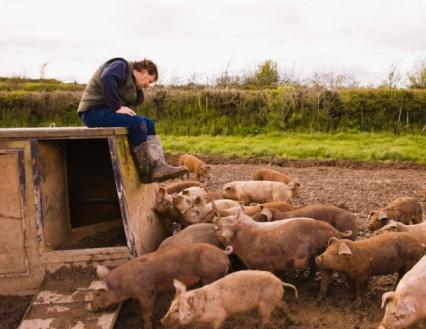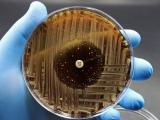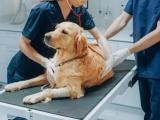A new joint report from European public health agencies suggests a positive association between antimicrobial consumption and resistance in both humans and food-producing animals—and it highlights the need for prudent antimicrobial use in human and veterinary medicine.
The report, an integrated analysis of the consumption of antimicrobial agents and the occurrence of antimicrobial resistance (AMR) in bacteria from humans and food-producing animals, is the second joint report issued by the European Food Safety Authority (EFSA), the European Medicines Agency (EMA), and the European Centre for Disease Prevention and Control (ECDC). Using data collected from the agencies' European Union (EU)-wide clinical and epidemiologic surveillance networks for 2013 through 2015, the report focuses on particular combinations of antimicrobials and bacterial species considered important to public health.
While noting that AMR is complex and that levels of resistance may be influenced by other factors, the authors write, "Many of the observed findings fit well with the current knowledge of the epidemiology of AMR and infections relating to the bacterial species studied."
They add that the results should be used to promote responsible use of antimicrobials in both humans and food-producing animals.
Higher average use in animals
The report begins by looking at EU data on antimicrobial consumption in humans and food-producing animals. Although consumption is defined differently in humans and animals, to make the comparison as consistent as possible, the report expresses consumption in milligrams of active substance per kilogram of estimated biomass (mg/kg). Human antimicrobial consumption is typically reported as defined daily doses per 1,000 inhabitants.
Overall, the report found that average antimicrobial consumption was higher in food-producing animals than in humans, although the difference was largely influenced by a handful of countries with significant animal populations.
In 2014, the average total consumption of antimicrobials was 124 mg/kg in humans and 152 mg/kg in animals, but the median was higher in humans (118 mg/kg vs 67 mg/kg). In Cyprus and Spain, antimicrobial consumption was more than three times higher in food-producing animals than in humans. But in 18 of the 28 countries included in the analysis, antimicrobial consumption in food animals was lower than in humans.
Consumption also varied by class of antibiotic. For example, consumption of third- and fourth-generation cephalosporins was much higher in human medicine, particularly in hospitals, than in veterinary medicine. Fluoroquinolone use in humans was higher as well, though the difference was not as pronounced. But consumptions in food-producing animals of polymyxin antibiotics like colistin and of tetracycline far outweighed use in humans. Consumption of macrolides was similar in both groups.
Link between consumption, resistance
Across both sectors, univariate and multivariate analyses indicated a relationship between consumption and the occurrence of antimicrobial-resistant isolates in certain species of bacteria, though not all. For example, multivariate analysis showed that increased human consumption of third- and fourth-generation cephalosporins, mostly in hospitals, in 2013-15 was associated with a higher probability of third-generation cephalosporin-resistant invasive Escherichia coli isolates in humans.
In addition, increased consumption of fluoroquinolones in humans was associated with a higher probability of fluoroquinolone resistance in invasive E coli in humans, and significant associations were found between human use of carbapenem antibiotics and carbapenem-resistant Klebsiella pneumoniae isolates.
In food-producing animals, significant positive associations were found between consumption of fluoroquinolones and resistant E coli, Salmonella, and Campylobacter isolates; between macrolide consumption and resistance in Campylobacter coli; between consumption of tetracyclines and resistance in several species of bacteria, particularly Salmonella; and between colistin consumption and resistance.
Multivariate analysis also found that resistance to fluoroquinolones in Salmonella spp and Campylobacter jejuni in humans was significantly associated with fluoroquinolone resistance in food-producing animals, which in turn was linked to consumption of fluoroquinolones in those animals. Similarly, consumption of macrolides in food-producing animals was associated with macrolide-resistant C coli and C jejuni in humans, and tetracycline-resistant C jejuni in humans was linked to tetracycline use in animals, mostly poultry.
The authors say future research could benefit from more detailed and comprehensive data, including consumption data broken down by animal species, and from including other potential resistance-influencing factors in the analysis—such as travel by humans, the transfer of patients between hospitals, and the exposure of animals and humans to resistant bacteria via the environment.
Vytenis Andriukaitis, European Commissioner for Health and Food Safety, said in an ECDC press release that the findings highlight the need for a "One Health" approach to fighting AMR.
"To contain antibiotic resistance we need to fight on three fronts at the same time: Human, animal, and the environment," Andriukaitis said.
See also:
Jul 27 ECDC, EFSA, and EMA joint report
Jul 27 ECDC press release






















